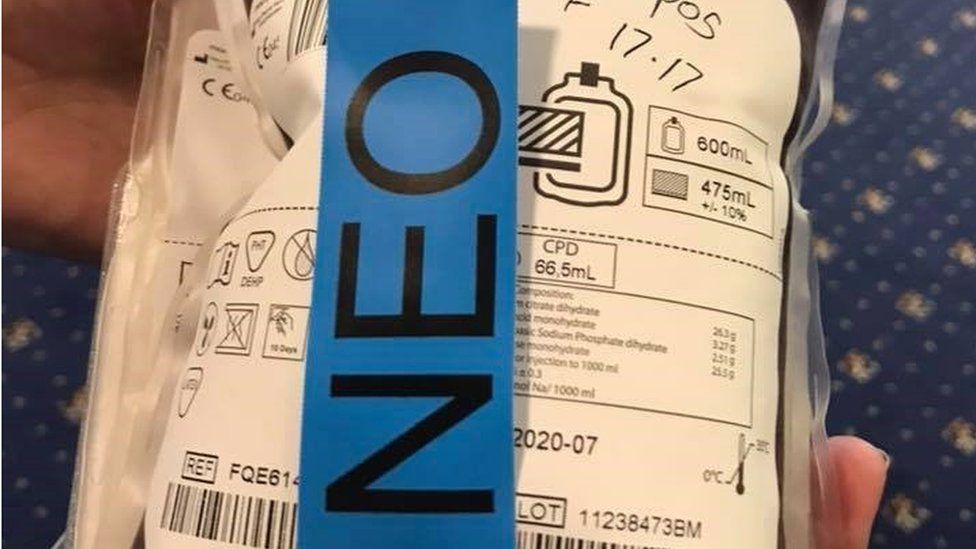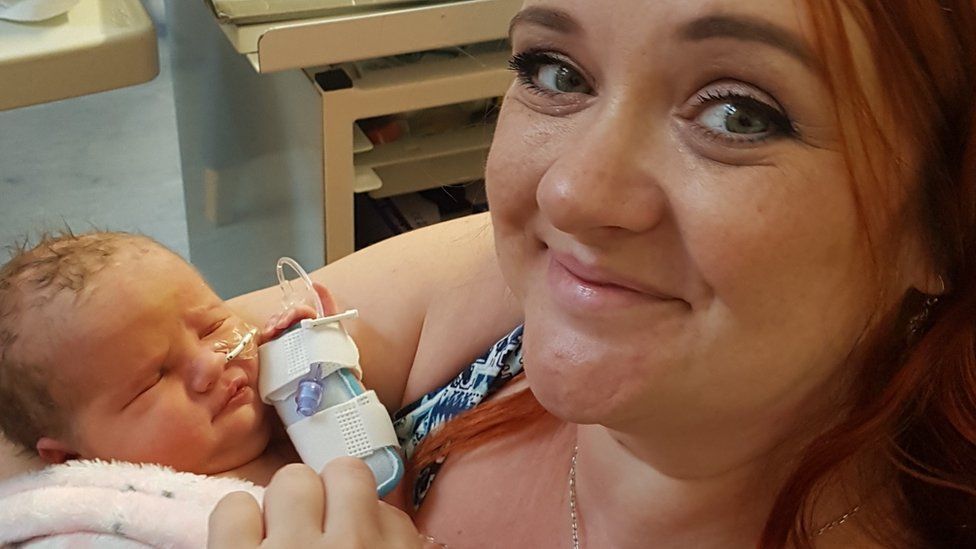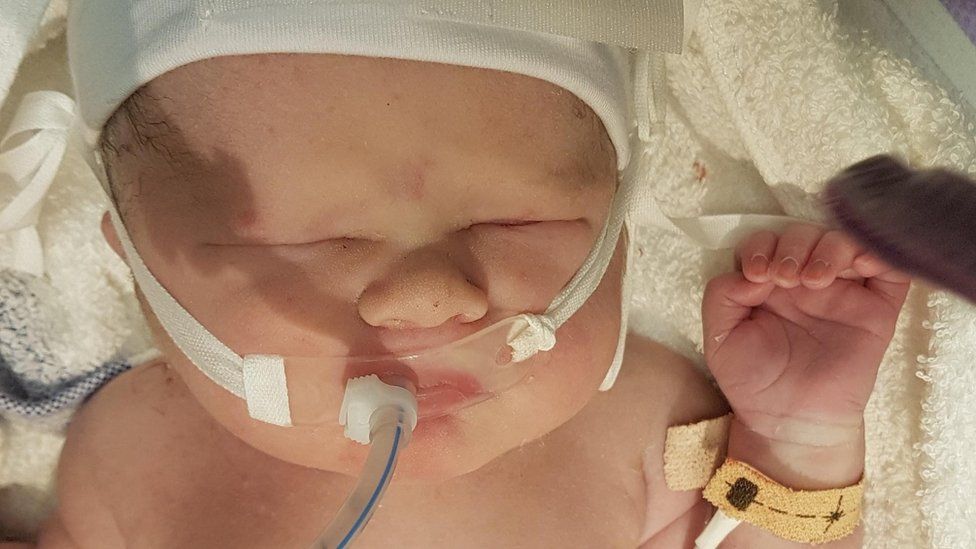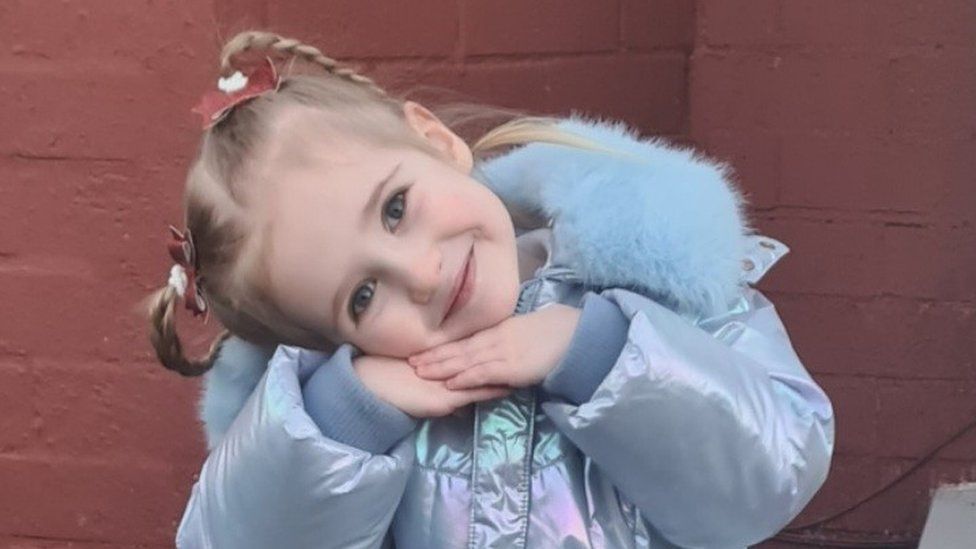
By Catherine Snowdon
BBC News
At my last donation session, the donor carer who was about to put the needle in my arm asked: “It must feel great being a Neo?”
My baffled face prompted her to show me the bright blue tag that was waiting in the bowl to receive my bag of blood. Neo was written in large font on it. “Your blood is special, it’s going to help the tiniest of patients,” she explained.
Neo stands for neonatal, which is the term used to describe a baby in the first 28 days of life.

As my blood was collected I had a speed lesson about how blood is tested after donation. It turns out some patients – including infants – need specific blood.
I wanted to learn more so I spoke to Dr Andy Charlton, a consultant in haematology and transfusion medicine at NHS Blood and Transplant.
He explained that all donated blood is screened for HIV, hepatitis B, C, and E, as well as syphilis.
Once that has been done, further tests and processes are carried out on some samples to ensure they are suitable for patients who have specific requirements.
For instance, some people need blood that has been “washed” to remove proteins they have previously had allergic reactions to during transfusions.
Common virus
Blood that is destined for new babies, immunocompromised patients, pregnant women or to be transfused into a foetus in-uterine must be screened for a virus called cytomegalovirus or CMV.
Part of the herpes virus family, it is very common and usually harmless, causing mild flu-like symptoms or none at all. But for some people it can be serious.
In babies it can cause seizures, sight and hearing problems as well as damage to the liver and spleen. In rare cases it can be deadly.
Estimates vary but it is thought that between 50 and 80% of adults in the UK have had CMV. As only about 2% of the eligible population in England currently give blood, finding enough donors who have not been exposed to the virus is crucial for supplies.
The blood I donated the previous time was tested and came back clear of antibodies for CMV, meaning I had not been exposed and received the special tag. My blood will be tested for the virus every time I donate, to ensure I have not caught it in the interim.
Immunity to the virus lives forever in white blood cells so if I ever catch it, my blood can no longer be given to these vulnerable patients.
I am one of only 10,916 active donors in England who has CMV-free, B- blood. Over the last year 153,801 units of CMV negative blood products were requested by hospitals.
Dr Charlton says demand for “specialised blood components” is increasing and urges people to come forward to donate.
“We can’t thank our donors enough,” he says. “Every donation of blood is a gift of life and can save more than one person.”
Lifesaver
No-one understands the importance of blood donation better than Hayley Bean. Her daughter Willow’s life was saved soon after birth by a transfusion of CMV-free blood.

During pregnancy, Hayley was diagnosed with vasa previa, a dangerous condition in which the blood vessels from the placenta or umbilical cord block the birth canal.
The vessels are at risk of rupture at any time and, because they obstruct the baby’s passage out of the uterus, natural birth is impossible.
Hayley was admitted to hospital at 32 weeks for monitoring, and a Caesarean section was planned for 35 weeks.
During the operation, Willow’s blood vessels burst, causing life-threatening bleeding.

“All the alarms were going off and people were running around,” recalls Hayley.
“They got Willow out and I waited to hear that first cry. It was the worst moment of my life. She wasn’t breathing and had gone into shock. The neonatal team had to resuscitate her. After about 10 minutes I remember finally hearing a tiny cry.”
Willow was taken to intensive care after a nurse quickly took a picture to show Hayley.
“All I remember was how pale and swollen she looked,” she says.
Hayley finally held Willow for the first time 12 hours after she was born.

Willow is now a thriving four-year-old, and Hayley is eternally grateful for the treatment her daughter received.
“She was in intensive care for five days but there was no permanent damage, thanks to her getting that blood transfusion,” says Hayley.
“She wouldn’t be here today except for the kindness of a stranger. Someone, somewhere made the choice to give blood, and it’s thanks to them that Willow is here today.”
A few days after my first Neo donation, the text I had been waiting for came through. It told me which hospital my blood had been issued to. I smiled and wished the little one well.https://blejermot.com/